When it comes to getting a cat, it’s important to know a bit about the breed you’re getting. Cats are differentiated by color, coat, personality, and much more. If you’re looking for certain traits or qualities, you have more chance of finding them in specific cat breeds. However, some descriptors of cats are not actual breeds. Both tortoiseshell and calico fall into this category. They are not actual breeds of cats but rather are ways to describe the physical color and pattern of the cat’s coat.
This doesn’t mean that cats that fall into the tortoiseshell category don’t have different personalities. Ask a tortoiseshell owner and they’ll be sure to tell you about “tortitude,” a term coined for the attitude that these cats give off. Calico cats also have a reputation for being temperamental at times, but many owners can describe some great differences between the two types of cats.
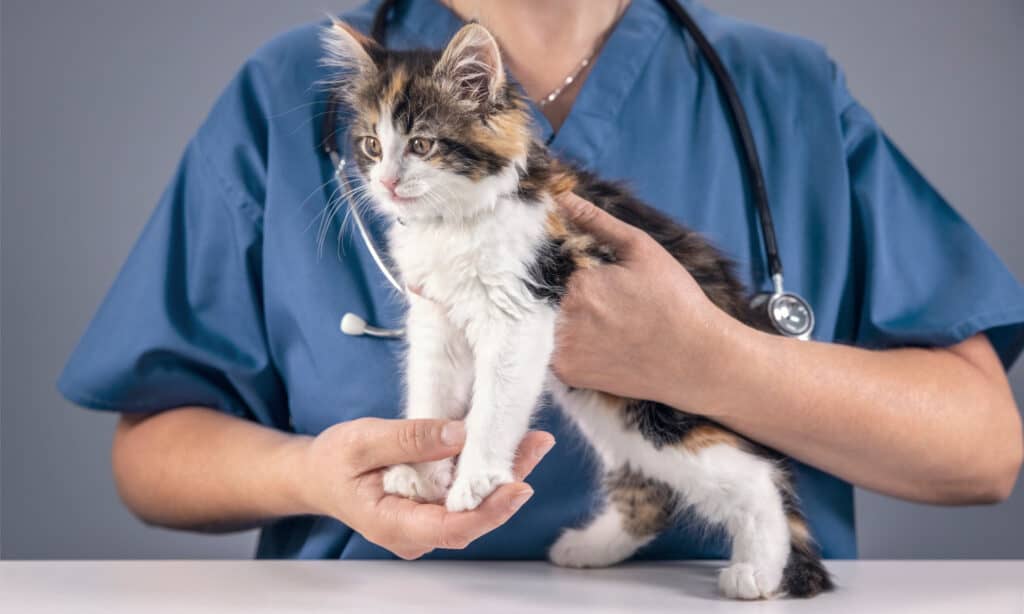
Between tortoiseshell cats and calicos, if there’s a fair amount of white, it’s likely a calico.
©iStock.com/BrianAJackson
1. Color
The biggest difference between tortoiseshell and calico cats is the presence of white on calicos. Almost every breed of cat has the potential to fall into the calico category. The term basically means that they are tricolor. Most calicos are white, black, and orange. Some calicos have blue, cream, red, brown, or tan. They are recognizable by having only three colors in their coat and often have a majority of white fur.
Tortoiseshell cats are usually bicolor. They are black and brown and may have different shades of these two colors. They may also be tan, orange, or blue. Tortoiseshell cats can even have white patches, but if there’s just a small amount they can’t be considered a calico. Cats like this are often referred to as “torticos,” a term for describing those unique, in-between kitties.
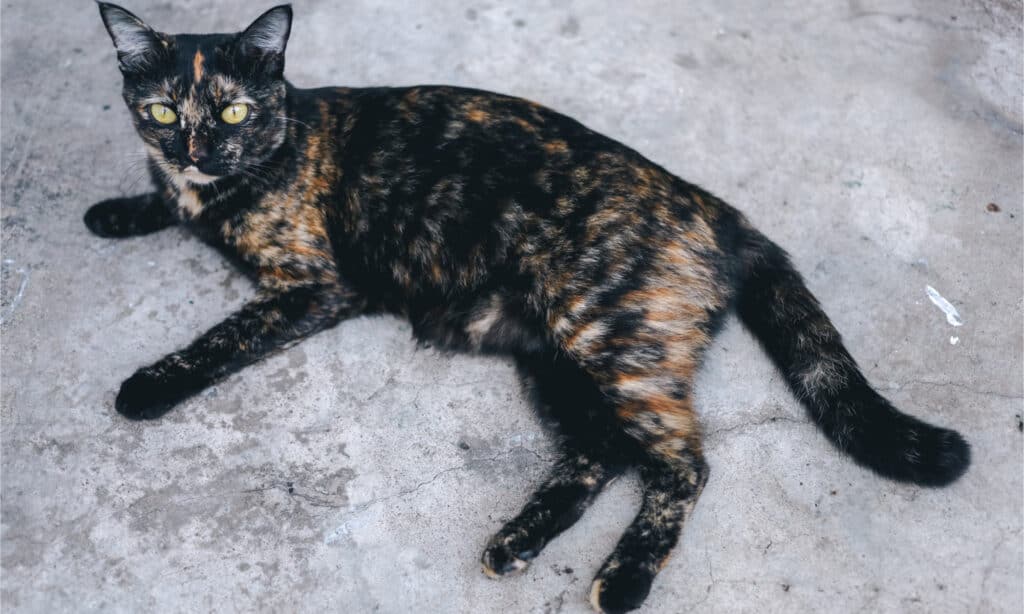
Tortoiseshell cats are usually bicolor, with various shades of two colors and very little to no white.
©monster_code/Shutterstock.com
2. Tortitude
There’s a reason why “tortitude” is a well-known term amongst cat owners. Tortoiseshell cats have a reputation for being feisty and giving off quite an attitude. Calico cats don’t usually have such strong personalities, so they’re better for families with young children or other pets.
3. Good Luck
Tortoiseshell and calico cats are considered lucky in many cultures. In the U.S., calicos are called “money cats” and are thought to bring their owners good fortune. They’re also symbols of fortune in Japan and Ireland. Some folklore claims that they can ward off ghosts and protect sailors on long journeys. For this reason, calicos were often taken on ships that were traveling far.
One folklore story says that the tortoiseshell cat got its coat from the sun. The story goes that the sun wanted to visit the Earth, so it got the moon to cover its post for a while. It came to the Earth and chose to take the form of a fast and secretive creature — a black cat. When the moon got tired and went back to space without a warning, the sun had to leave Earth quickly and return to its spot in the sky. In its rush back to space, the sun left thousands of rays of light on the black cat’s body. The split face colors on tortoiseshells are representative of their dual nature and split personalities, as well as their half-cat, half-star nature.
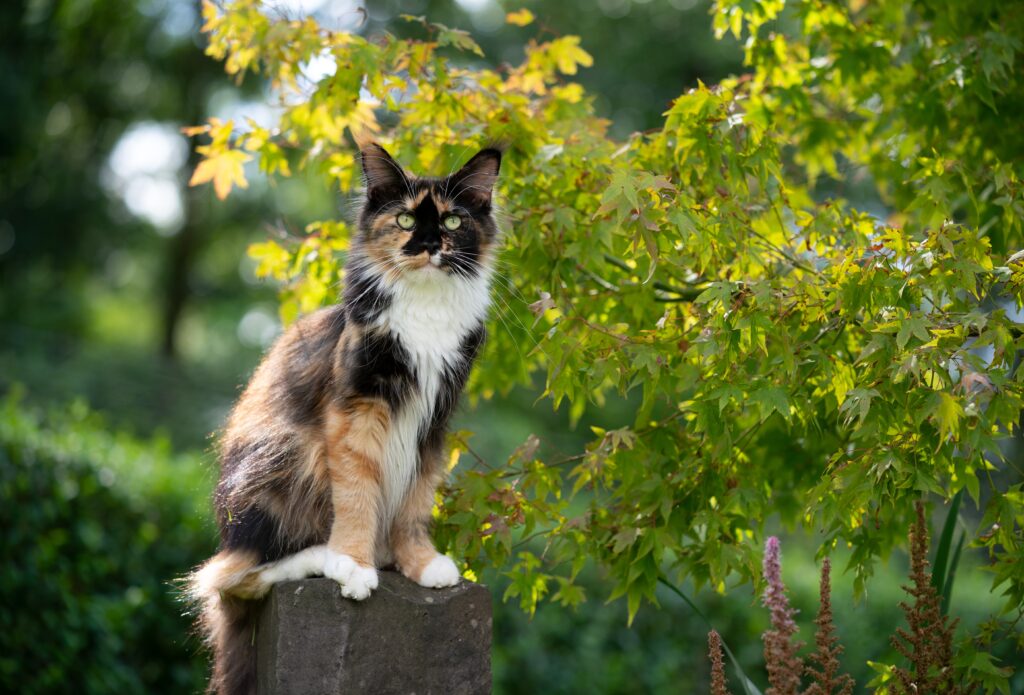
While calicos aren’t known for their good luck like tortoiseshells are, they certainly are beautiful cats!
©Nils Jacobi/Shutterstock.com
Similarities Between Tortoiseshell and Calico Cats
Tortoiseshell and calico cats aren’t all that different. Their main difference is the presence of white in their coats. While neither tortoiseshells nor calicos are a specific breed of cat, nearly any breed can display these markings. Both types of these cats can have tabby markings. These markings are stripes that run across any part of their coats. Both tortoiseshell and calico cats can have any coat length, from short to extremely long fur.
Both tortoiseshell and calico cats are known for their independence, though calicos are the more friendly of the two. They have similar lifespans, living an average of 15 years.
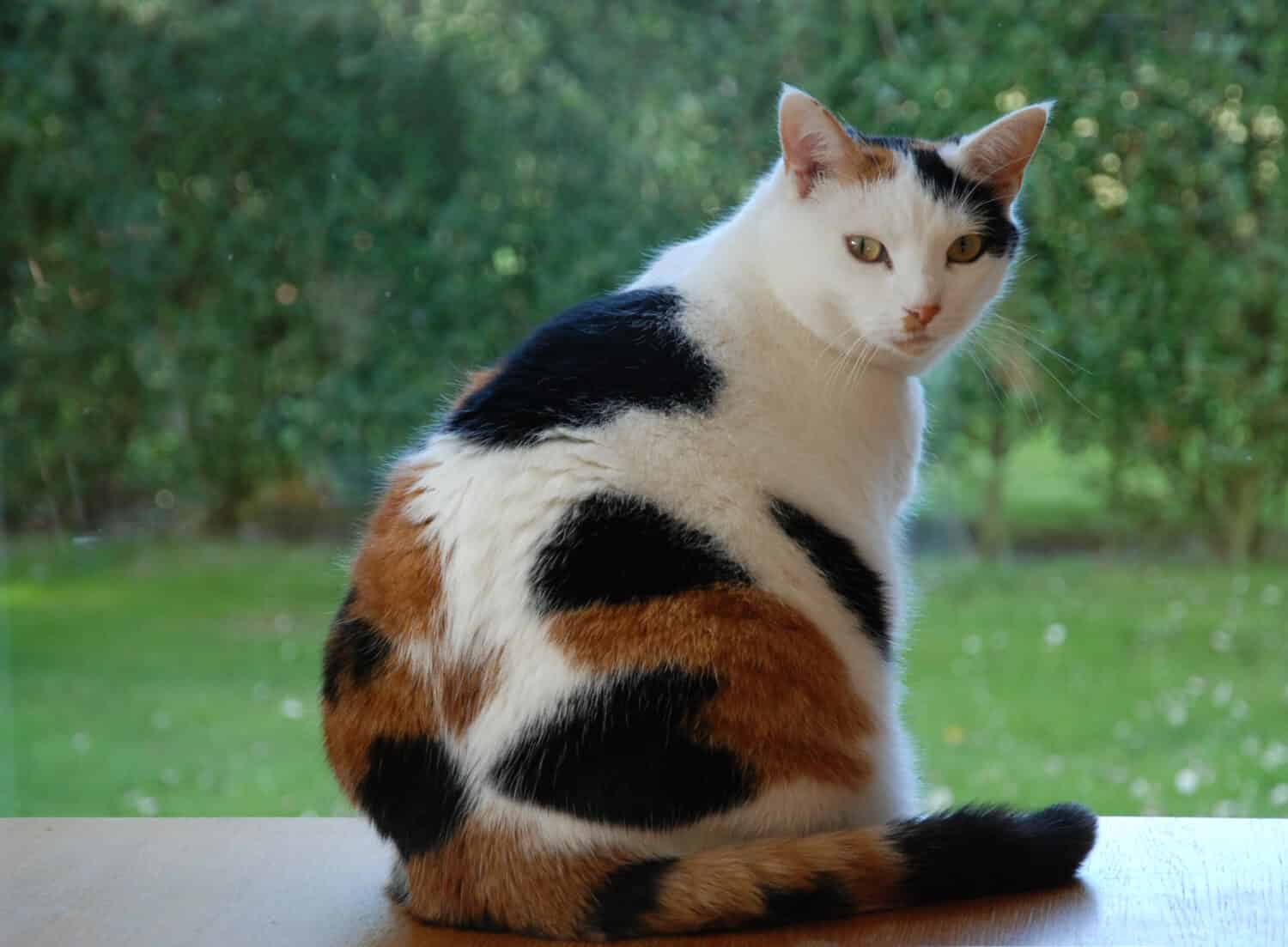
Both calicos and tortoiseshells live an average of 15 years.
©Patricia Tureay/Shutterstock.com
Female or Male
There is a common fun fact that all calico cats are female, but that isn’t always true. Calico cats do have a strong tendency to be female, and male calicos are rare — but not impossible. This is because the calico coat gene is linked to the female, X chromosome, and calico cats have to have two X chromosomes. This means that in the rare case of a male calico cat, the cat has an extra chromosome, making it XXY. Cats like this usually display no symptoms, but they can have an increased risk for diabetes and heart disease.
Tortoiseshell cats also are linked to the X chromosome, and require two copies to have that coloring. Like calicos, most tortoiseshell cats are female, and males have an extra chromosome. When this condition occurs in humans, it’s called Klinefelter’s Syndrome.
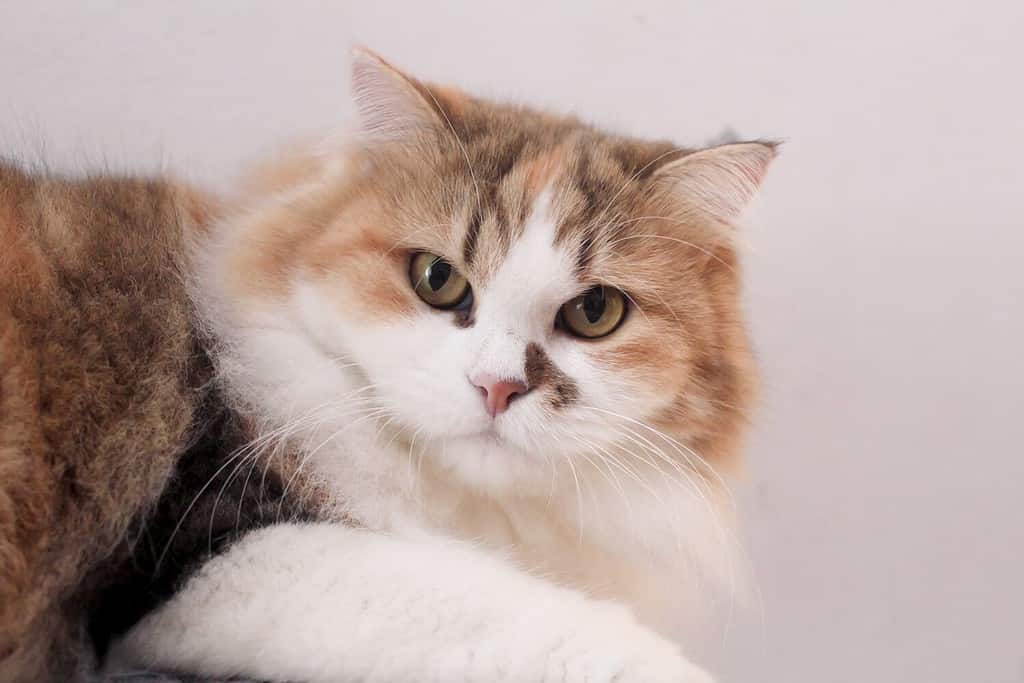
Calico and tortoiseshell cats are almost always female, and males are rare.
©pthiofanni/Shutterstock.com
What Is Another Type of Rare Cat?
The Sokoke is the rarest domestic cat breed in the world. Originating in the forests of Kenya, the Sokoke is an intelligent, playful, and family-oriented, shorthaired breed. Its coat has a kind of camouflage pattern with ticking in both the ground color and the pattern itself. Its long legs produce a graceful tip-toe gait. The Sokoke has large, upright ears. It is a cat of medium activity and easy to keep.
Despite its rarity, the Sokoke does not cost any more that a tortoiseshell or a calico, but they are rare as well. Any one of these three rare cat breeds will cost approximately $500-$2000 from a breeder. Prices vary according to how distinctive or how striking the color combination is, particularly on the tortoiseshell.
The photo featured at the top of this post is © Mawaddah F/Shutterstock.com
Thank you for reading! Have some feedback for us? Contact the AZ Animals editorial team.






